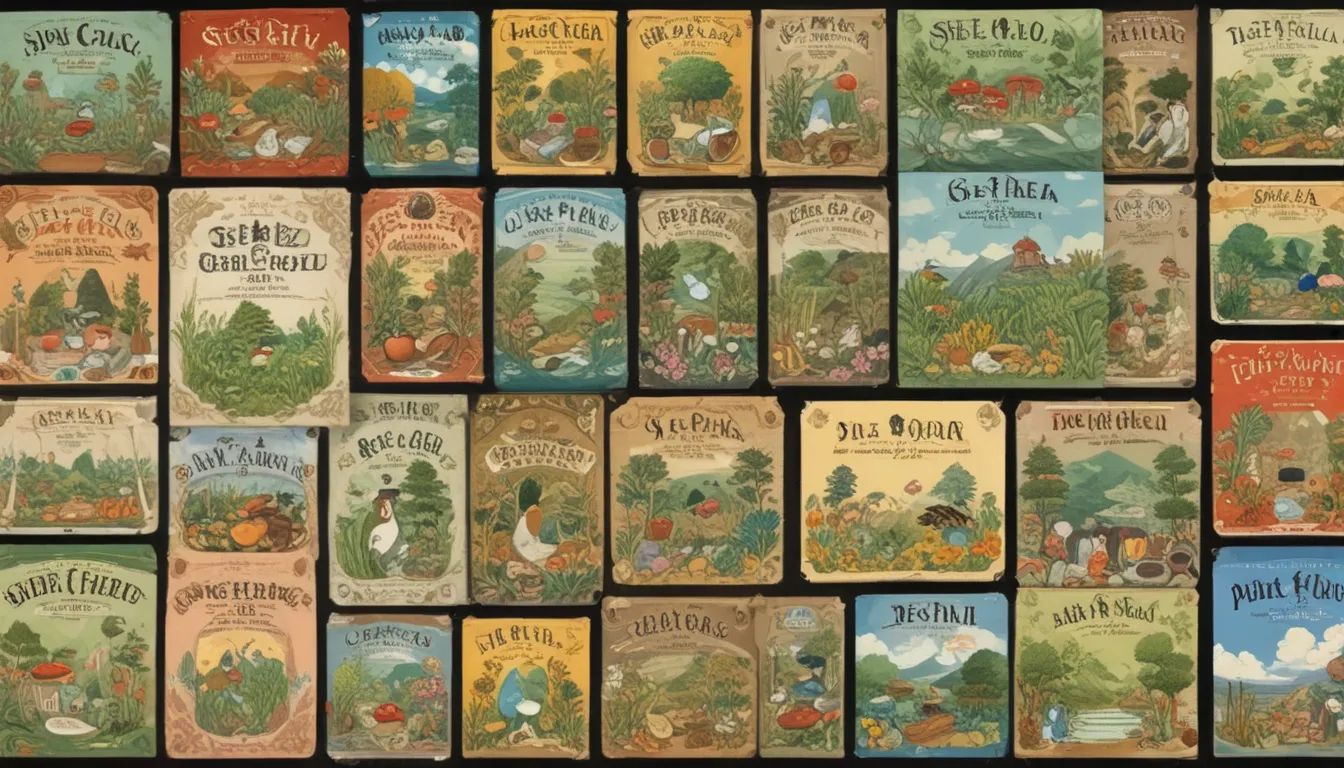The Complete Guide to Understanding Seed Packets

Have you ever felt overwhelmed by all the information on a seed packet? Don’t worry, you’re not alone. Seed packets are much more than just pretty envelopes – they contain a wealth of knowledge that can help you successfully cultivate the seeds inside. In this comprehensive guide, we will break down the key information found on seed packets so you can shop like a pro and ensure a bountiful garden.
Decoding the Jargon on Seed Packets
Reading the fine print on seed packets can be daunting, but it’s crucial for garden success. Let’s demystify the key categories of information found on seed packets so you can make informed decisions when purchasing seeds.
1. Plant Photo or Illustration
Most seed packets feature an image of the mature plant, which can help you visualize what the plant will look like in your garden. Pay attention to details like size, color, and shape, as they can influence your planting decisions.
2. Plant Name
The plant name on a seed packet includes the common name, cultivar, and Latin name. The Latin name is particularly useful for comparing plants, as common names can vary. Make sure to familiarize yourself with the different plant names to make informed choices.
3. Plant Description
Seed packets often provide detailed descriptions of plants, including color, size, pollinators attracted, types of blossoms, and more. These descriptions can help you select plants that align with your gardening goals and preferences.
4. Horticultural Company
The company that cultivated, harvested, packed, and distributed the seeds is identified on the packet. It’s advisable to stick with companies that have a proven track record of quality products to ensure successful gardening experiences.
5. Price and Weight
Seed prices and weights can vary based on factors like production costs and volume. Be mindful of the cost and quantity of seeds you purchase to ensure you get the best value for your money.
6. Accreditations
Look for certifications like Certified Organic, Fair Trade, Non-GMO, Heirloom, or Hybrid on seed packets. These designations indicate the seed’s production methods and genetic attributes, helping you make environmentally conscious and informed choices.
7. Packed for/ Sell by Date
Seeds have a shelf life, so it’s essential to check the packed for/sell by date on seed packets. Fresh seeds have higher germination rates, so aim for the current year’s crop to maximize your gardening success.
8. Lot Number
Lot numbers on seed packets help identify specific batches and track them in case of recalls. Pay attention to lot numbers for quality control purposes.
9. Type
Seed packets may indicate whether the plant is an annual, biennial, or perennial, along with its hardiness level. Understanding the plant’s lifecycle and cold tolerance can guide your planting decisions.
10. Hardiness Zone
Some packets list the plant’s suitable hardiness zones to help you select plants that will thrive in your climate. Check your local hardiness zone before purchasing seeds to ensure compatibility with your garden environment.
11. Planting Depth
Seeds should be planted at the appropriate depth for successful germination. The planting depth information on seed packets guides you on how deep to sow seeds for optimal growth.
12. Sun/Shade Requirements
Understanding a plant’s sun and shade preferences is crucial for proper placement in your garden. Whether a plant requires full sun, partial shade, or full shade can influence its growth and development.
13. Height
The height of plants is essential for garden planning, as it helps create visually appealing and functional garden layouts. Pay attention to height descriptions on seed packets to organize your garden effectively.
14. Days to Germination
The germination period specified on seed packets gives you an estimate of when to expect sprouts after planting. Factors like soil, light, moisture, and temperature can impact germination times.
15. Maturity
Knowing when a plant reaches maturity helps you plan for harvests and blooming periods. Maturity information on seed packets guides you in managing your garden timeline effectively.
16. Direct Sow vs. Start Indoors
Seed packets may indicate whether seeds should be sown directly outdoors or started indoors. Follow these instructions to ensure successful seedling growth and transplantation.
17. Bloom Period
Understanding when plants bloom can help you create a garden with continuous blooms throughout the season. By selecting plants with varying bloom times, you can enjoy a colorful garden from spring to fall.
18. Pre-Planting Prep
Some seeds require special preparation like scarification or stratification for successful germination. Follow the pre-planting instructions on seed packets to promote healthy seed growth.
19. Harvest Information
Edible plants often include instructions on how and when to harvest for optimal flavor and yield. Follow the harvesting guidelines on seed packets to enjoy the best results from your crops.
20. Level of Difficulty
Seed packets may indicate the plant’s difficulty level, from easy to grow to moderately challenging. Consider the plant’s requirements and your gardening experience when selecting seeds to set realistic expectations.
21. Soil/Moisture Requirements
Plants have varying soil and moisture preferences that affect their growth. Understanding your soil type and watering needs can help you choose plants that will thrive in your garden conditions.
By familiarizing yourself with these key categories on seed packets, you can make informed decisions when selecting seeds for your garden. Whether you’re a novice or experienced gardener, paying attention to the information on seed packets can lead to successful gardening outcomes.
Making Informed Choices for Your Garden
When it comes to purchasing seeds, it’s essential to look beyond the packaging and focus on the information provided. By understanding the details on seed packets, you can take charge of your gardening experience and make informed choices that align with your goals and preferences.
Remember to keep track of your favorite plants in a garden journal for future reference, and don’t hesitate to experiment with new varieties to expand your gardening horizons. With the knowledge gained from reading seed packets, you can confidently plan your garden, select the right seeds, and embark on a rewarding gardening journey.
What plants will you feature in your garden this year? Share your gardening plans in the comments below and inspire fellow gardeners with your selections. Happy planting!
For more gardening tips and resources, explore these helpful guides: – How to Create a Hotbed Garden to Extend Your Growing Season – Should You Rotate Cover Crops? – How to Use Straw Mulch in the Vegetable Garden





